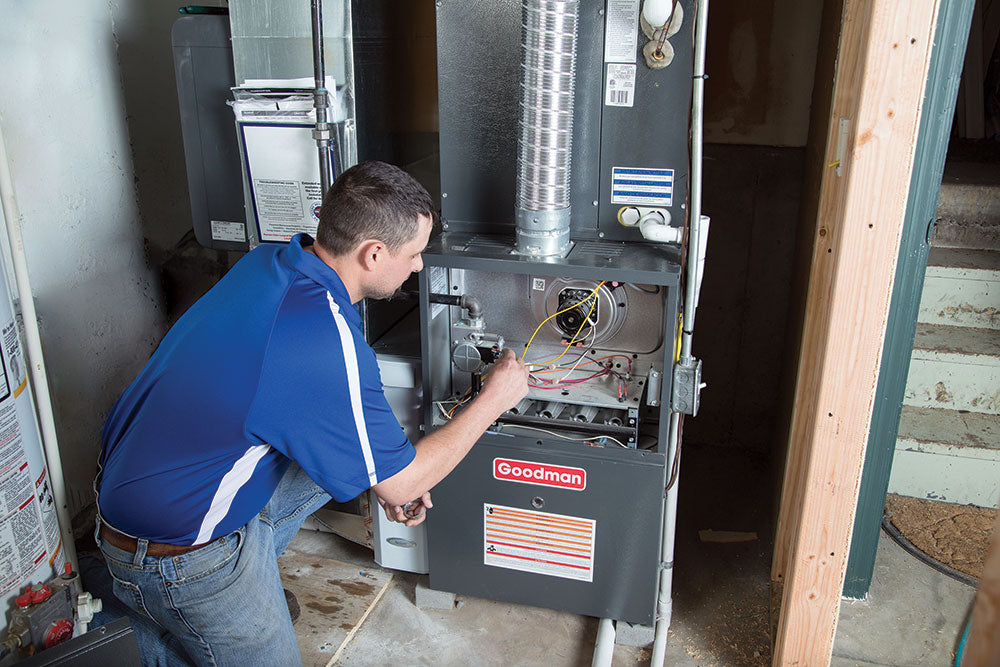 While shopping online for your new gas furnace, you might have noticed that there are several options when it comes to AFUE ratings. Typically, the higher the AFUE rating, the more you're likely to pay for the gas furnace--why is that? The simple answer: you're paying for increased efficiency, durability, and performance. Despite these additions, is the increase in price that comes with a higher AFUE rating really worth it? We do some digging to give you a definitive answer.
While shopping online for your new gas furnace, you might have noticed that there are several options when it comes to AFUE ratings. Typically, the higher the AFUE rating, the more you're likely to pay for the gas furnace--why is that? The simple answer: you're paying for increased efficiency, durability, and performance. Despite these additions, is the increase in price that comes with a higher AFUE rating really worth it? We do some digging to give you a definitive answer.

Find the Ideal Furnace for Your Home: View Our Products
What does AFUE stand for and what does it mean?
Before we delve into the meat of the investigation, let's first go over what AFUE stands for and how the AFUE rating effects the quality of your gas furnace. AFUE is an acronym that stands for Annual Fuel Utilization Efficiency. Therefore, an AFUE rating would tell consumers what percentage of the furnace's fuel is used during operation and how much of it is lost through exhaust. For example, a gas furnace with an 80% AFUE rating would indicate to the consumer that 80% of the furnace's fuel is consumed during option--and that 20% is lost through exhaust.
So, in essence, when we talk about a "high-efficiency gas furnace," we're talking about the furnaces that have a 90% AFUE rating or higher, as they waste less fuel than other options on the market.
Eventually, in comparison to other models, gas furnaces with a higher AFUE rating (again, 90% or higher) save consumers a bit on their heating costs, as they waste less gas to fuel the home. In contrast, homeowners who have purchased a gas furnace with a lower AFUE rating tend to spend more money to heat their homes, since those furnaces waste more gas in the heating process.
Legally, the United States government does not allow consumers to install a gas furnace with a rating of lower than 80%.
What are the price differences between the gas furnaces with an 80 and 90 percent AFUE rating?
Typically, you'll need to pay up to a thousand dollars more to score yourself a high-efficiency gas furnace. And typically, you'll also be paying more for advanced features that come with the systems with a higher AFUE rating, like more thermostat settings and things like two-stage gas valves, which allow the user to experience a solid heating performance for years after their purchase.
On average, according to the U.S. Department of Energy, each American household spends approximately $1,100 on heating and cooling their homes in a year. Though, as you might have guessed, the amount you pay for heating depends almost solely on where you live and how much space you're attempting to heat.
Basically, in order to reap the rewards of purchasing a gas furnace with a higher AFUE rating, the average consumer, who can expect their furnace to last them at least 15 years, will need to save at least $70 per year to make up for the increase in price of a more efficient model (one that would set you back at least $1000 more). Typically, if you're spending around $1,100 per year on heating, a 96% AFUE furnace will save you around $176.
Eventually, as you can see, this investment will pay off at some point down the line. Though, it is still important to acknowledge the fact that, unless you're purchasing a fairly standard 96% AFUE model with almost no bells and whistles, the replacement parts for your furnace will cost more than they do for other models with lower efficiencies.
So, is the upgrade really worth it?
The short answer: yes. However, if you're not exactly flush with cash at the time of your purchase, it might be better just to pay the lower cost of an 80% AFUE model and deal with a heating bill that might cost a bit more in the long-run.







